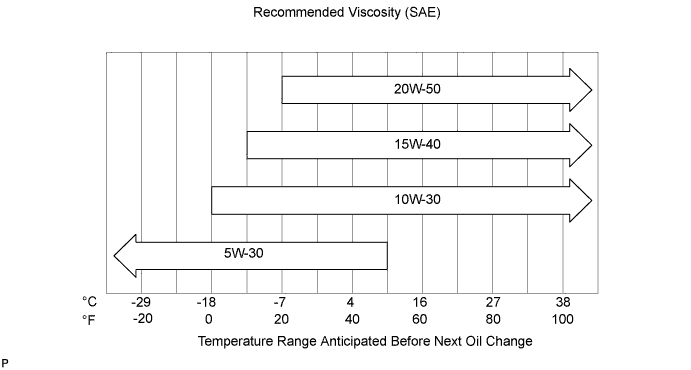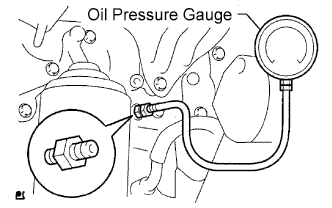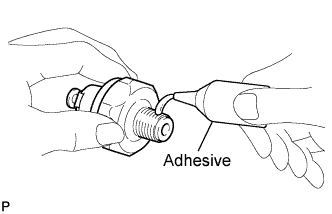Lubrication System -- On-Vehicle Inspection |
| 1. CHECK ENGINE OIL LEVEL |
Warm up the engine and then wait for 5 minutes after turning the engine off. The oil level should be between the low level and full level marks of the dipstick.
- If the oil level is low, check for leakage and add oil up to the full level mark.
- NOTICE:
- Do not add engine oil above the full level mark.
- If the oil level is low, check for leakage and add oil up to the full level mark.
| 2. CHECK ENGINE OIL QUALITY |
Check the oil for deterioration, water contamination, discoloring, or thinning.
If the quality is visibly poor, replace the oil.- HINT:
- TOYOTA Genuine Motor Oil is in this vehicle when it is shipped.
- Use TOYOTA Genuine Motor Oil or equivalent to satisfy the following grade and viscosity.
- Oil grade:
- API grade CF-4 or CF (You may also use API CE or CD) SAE 5W-30 is the best choice for your vehicle, for good fuel economy, and good starting in cold weather.

| 3. CHECK OIL PRESSURE |
Disconnect the oil pressure switch connector.
Using a 24 mm deep socket wrench, remove the oil pressure switch.
Install the oil pressure gauge.
 |
Warm up the engine.
Measure the oil pressure.
- Standard oil pressure:
Condition Specified Condition Idle 29 kPa (0.3 kgf/cm2, 4.3 psi) or more 3,000 rpm 294 to 539 kPa (3.0 to 5.5 kgf/cm2, 43 to 78 psi)
Remove the oil pressure gauge.
| 4. INSTALL ENGINE OIL PRESSURE SWITCH |
Apply adhesive to 2 or 3 threads of the oil pressure switch.
- Adhesive:
- Toyota Genuine Adhesive 1344, Three Bond 1344 or equivalent
 |
Using a 24 mm deep socket wrench, install the oil pressure switch.
- Torque:
- 15 N*m{153 kgf*cm, 11 ft.*lbf}
- NOTICE:
- Do not start the engine for at least 1 hour after installation of the switch.
Connect the oil pressure switch connector.
Start the engine and check for engine oil leaks.